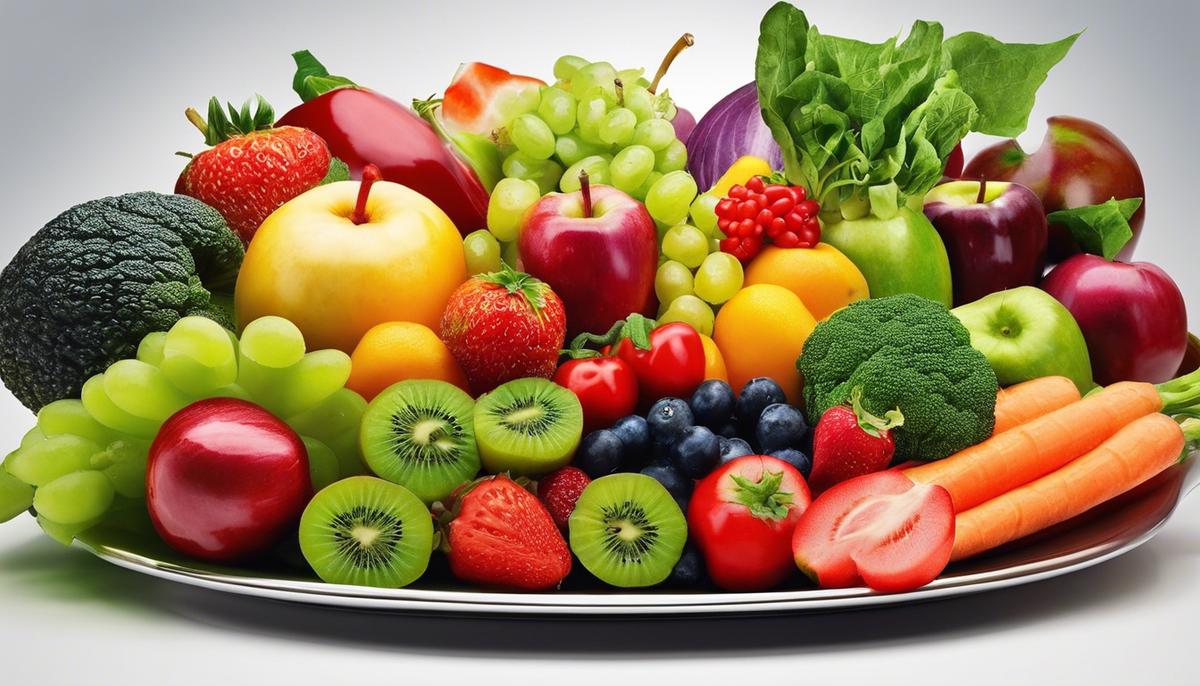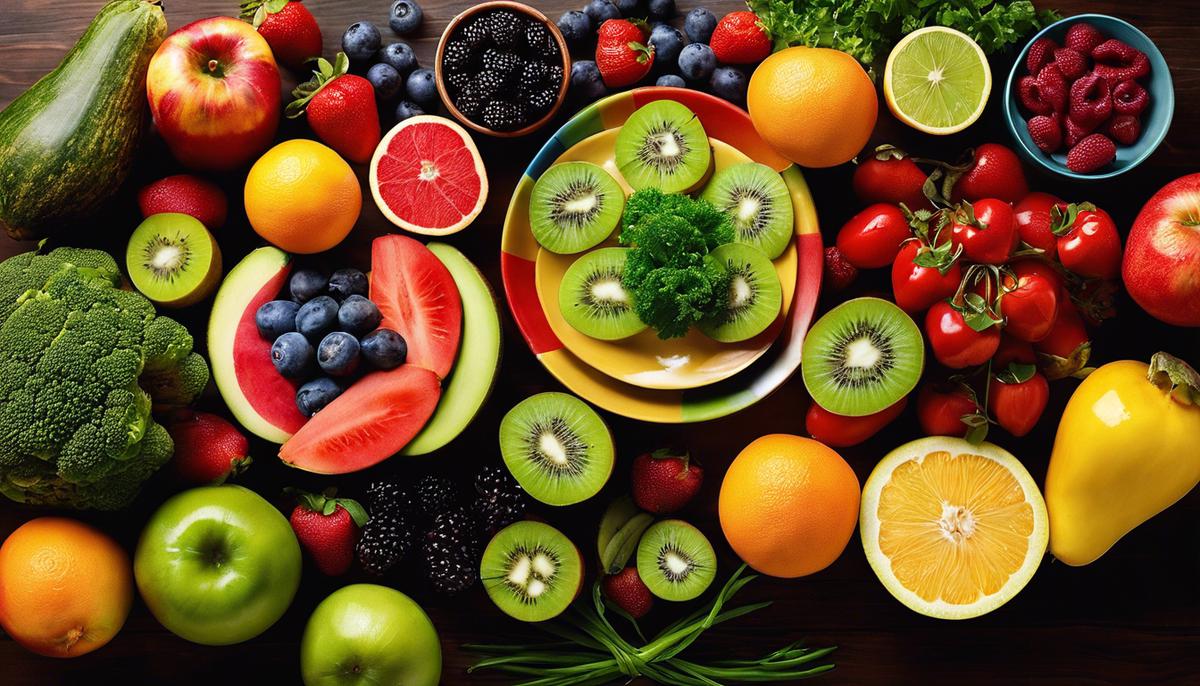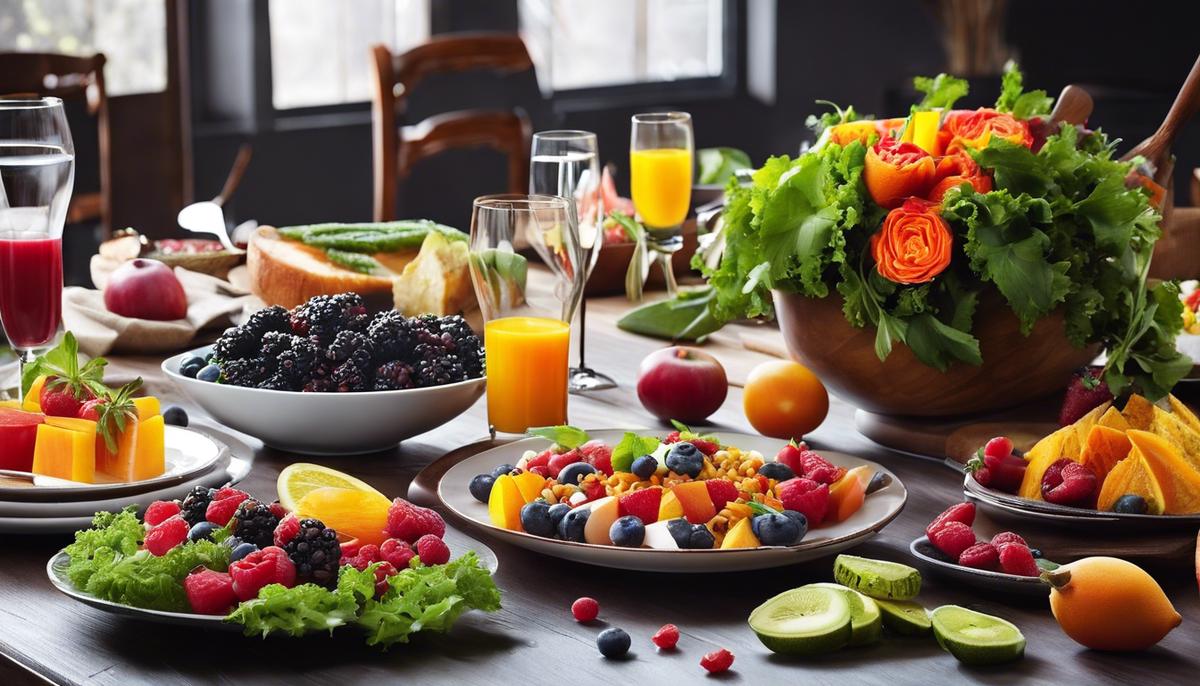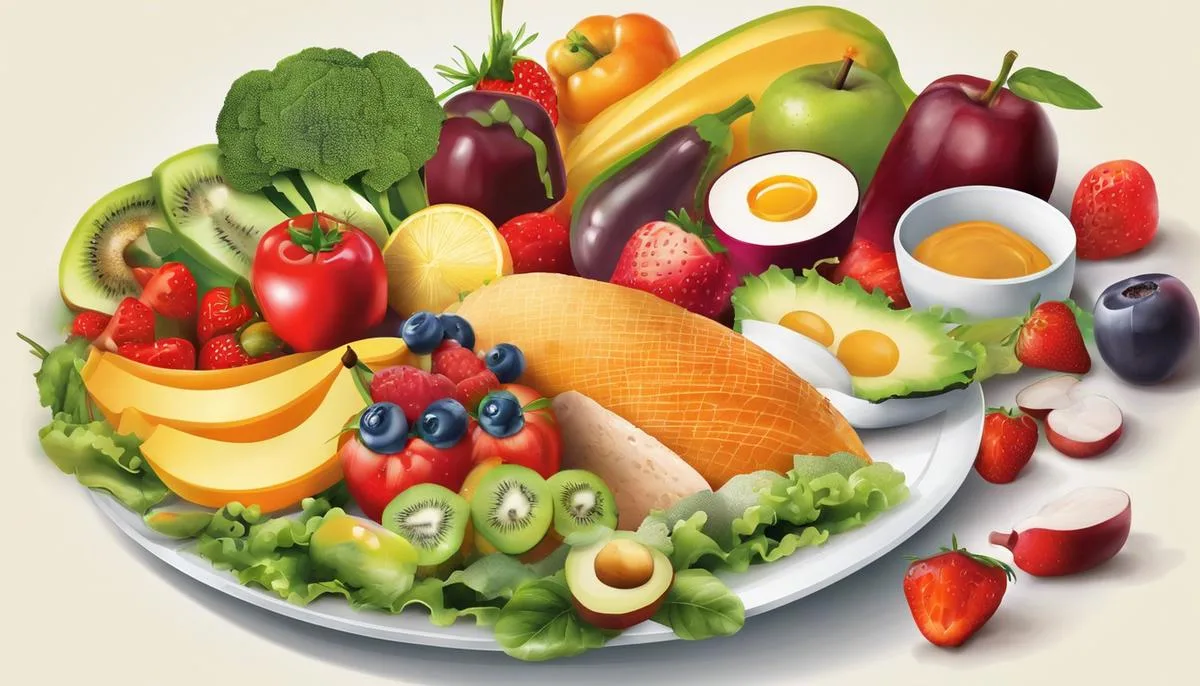Nurturing a child’s relationship with food is not just about providing sustenance; it’s a journey of education and discovery that sets the foundation for a lifelong commitment to health and well-being. As we embark on a quest to demystify the complex world of children’s nutritional needs, it’s pivotal to grasp the essence of balanced diets tailored to their growth and cognitive development stages. Our roles as mentors and caretakers are to guide and involve them in the art of meal planning and to create a positive, distraction-free eating environment, yielding the twofold benefit of nourishing their bodies and enriching their capacity to make informed food choices.
Understanding Nutritional Needs
Little Ones Living Large: The Essential Nutrients for Healthy Growth
Let’s dive into the blueprint of a thriving kiddo. In this exquisite journey of growth and discovery, it’s pivotal to understand the nutrition essentials that paint the vivacious picture of health for our little ones. A child’s plate should be as colorful and diverse as their personalities, brimming with vital nutrients that cater to each brushstroke of their development.
Proteins are the building blocks of life, the architects if you will, for constructing every cell in that growing body. Consider them the mainstay for tissue repair and muscle growth. Whether it’s a twirl of eggs in the morning or a ballet of lean meats, these protein performances are non-negotiable.
Carbohydrates synonymize with energy, delivering the necessary gusto for playground escapades and classroom quests. Think whole grains that break down like a slow burn, sustaining our energetic offspring throughout their action-packed narratives.
Lipids, or fats, often misunderstood as the villains of nutrition, are in truth, the secret guardians. They insulate and safeguard developing organs, not to mention their critical role in brain development—look for unsaturated versions like avocados and nuts, akin to picking the main characters in a storybook of health.
Vitamins and minerals are the supporting cast, each with a unique role in the storyline. Vitamin D steps into the spotlight, ensuring strong bones and a resilient immune system, while iron supports the drama of the circulatory system. Fruit and vegetables are the ensemble of these micronutrients, each leaf and peel packed with plot twists of antioxidants and phytochemicals.
Calcium, the custodian of bone health, demands a standing ovation. It lays the foundation for a lifetime of strength and structure. Think of dairy products and fortified alternatives as the steady drumbeat to the melody of growth.
Hydration might seem like a subplot, but it’s central to the narrative. Water is the conductor of the body’s symphony, orchestrating a harmonious balance in all bodily functions. Ensure that this elixir of life is always at arm’s reach for our protagonists.
Encompass this nutrient narrative into daily meals, and the pathway to strong, healthy, and vivacious children is all but guaranteed. While every child stars in their own story of growth, the common thread is a well-nourished beginning. Remember, nurturing with the full spectrum of nutrients sets the stage for nothing short of an extraordinary life tale.

Involving Children in Meal Planning
Crafting a Colorful Plate: How Meal Planning with Your Kids Can Cultivate Culinary Connoisseurs
Step into the kitchen, where creativity meets nutrition, and a sprinkle of love transforms every dish. Meal planning isn’t just about jotting down recipes. Oh, no—it’s an art form, darling! And who better to join you in this artistic endeavor than your little sous-chefs-in-training? Getting children involved in meal planning is the secret ingredient to fostering healthier eating habits and making those vibrant plates as delightful to the taste as they are to the eye.
Tip #1: Unleash Their Inner Picasso with Food Groups
Start by guiding your kids’ artistic vision toward the food groups—fruits, veggies, grains, proteins, and dairy. Take them on a grocery store adventure and let them pick items from each group. Whether it’s the vibrant reds of strawberries or the rich greens of spinach, this visual bounty is their palette for creating a masterpiece.
Tip #2: Keep it Playful with Shapes and Colors
Children are visual creatures, and nothing entices their senses quite like a mosaic of color on their plates. Teach them about the magic of combining different shapes and colors, much like choosing the perfect accessories to complement an outfit. A dash of cherry tomatoes here, a swirl of spiralized zucchini there—the goal is to make every meal a fiesta for the eyes!
Tip #3: Theme Nights: Dress-Up for the Taste Buds
Who doesn’t love a good theme? It’s the trendsetter of dinner parties! Plan theme nights where the whole menu is centered around a concept. Maybe it’s a tropical evening with Hawaiian chicken and a rainbow fruit salad. Kids can help design the menu, providing a practical application for their effervescent creativity, and giving them something fabulous to look forward to.
Tip #4: Responsibility is the New Black
Assigning children tasks during meal prep not only teaches them responsibility—it’s also incredibly chic right now. Let them dress the salad or garnish the main dish. When they invest time into preparation, they’re more likely to taste their creations. It’s the epitome of the “you made it, you try it” philosophy.
Tip #5: The Fine Art of Portion Control
Understanding portion sizes can be just as important as the nutrients that fill those portions. Empower your children by teaching them what a balanced plate looks like. Use their hands as a measuring tool (a fist for carbs, a palm for protein), an approach that is both practical and size-appropriate—after all, if the shoe fits!
By incorporating children into the meal-planning process, parents can effectively turn everyday nutrition into a creative journey—a catwalk showcasing the latest in dietary fashion. Children learn best through engaging, hands-on experiences, and what better way to explore the world of healthful eating than by making it a vibrant part of their day-to-day life? Let’s raise a glass (of water, darling) to wholesome habits, one beautifully plated dish at a time. Cheers to health, artistry, and, of course, fabulous taste!

Creating Positive Eating Environments
Designing a Delectable Domain: The Eating Environment’s Influence on Children’s Nutritional Bonds
Body:
In the world of haute cuisine and stylish living, aesthetics serve not just as a feast for the eyes but also as a catalyst for the palate—especially amoung the younger connoiseurs. The dining tableau, from the art on the walls to the glimmer of cutlery, forms an inseparable alliance with the gastronomic journey. When it comes to children, the eating environment sways their budding relationship with food, wrapping it in either a warm embrace or a standoffish shrug.
Imagine this: a tableau set for creativity with a spread that mimics a painter’s palette. Unleashing their inner Picasso, children regard food groups as colors to be mixed and matched. The canvas of the plate is theirs to fill, and the resulting masterpiece is a montage of nutritional variety. It’s not just about eating—it’s experiential dining at its best, turning every meal into a stroke of genius.
Keeping it playful with shapes and colors is much more than a whimsical fancy. It’s a subtle nod to the power of visual persuasion. By introducing foods shaped like stars, hearts, or even dinosaurs, meals morph into an adventure. Bold colors pop, enticing the young diner to explore a rainbow of nutrients—each plate a vignette of vibrant veggies and fruits, framing each dish like the latest trend on the runway.
Ever an advocate for engaging the senses, consider ‘Theme Nights’ the culinary equivalent to Paris Fashion Week. These dress-up soirées for the taste buds invigorate the mundane with an air of excitement. Whether it’s a tropical Hawaiian luau or a Parisian evening, themed dinners turn the dining space into an immersive experience. They’re not just eating; they’re traveling the world, one bite at a time.
Responsibility, often touted as the cornerstone of maturity, becomes the ‘new black’ in this stylish setup. When little ones are welcomed into the kitchen’s backstage, they’re handed the role of sous-chef, fostering a sense of ownership over their dietary choices. Mixing ingredients and setting tables, they fashion a connection of accountability and delight with each meal they help to create.
And let us not forget the fine art of portion control— the subtle elegance of ‘less is more’. It’s about cultivating an appreciation for quality over quantity, savoring each morsel. Presenting neatly plated arrangements to rival any Michelin-starred establishment ensures that children understand the balance and beauty of eating just the right amount.
In the end, the table, the decor, the food on display—every element of the environment is thoughtfully styled to elevate the act of eating beyond simple sustenance. Far beyond mere decoration, these carefully curated spaces and rituals build a positive, lasting relationship with food that could very well shape a lifetime of healthy habits. The dining room, much like a well-edited wardrobe, speaks volumes of the values and vitality within.

Embarking on the path to instill healthy eating habits in children is a dynamic and rewarding endeavor that extends far beyond the dining table. By becoming adept at weaving nutrition education into the fabric of children’s everyday experiences, we not only secure their physical health but also cultivate a sense of curiosity and empowerment in their food choices. As they grow, the seeds of knowledge and practice we’ve sown will blossom into a pattern of habits that supports their lifelong journey towards healthful and joyful eating.
Discover Writio, an AI content writer for websites and blogs – Equipped with cutting-edge technology, Writio crafts engaging articles effortlessly. This post was skillfully crafted by Writio.
Thank you for reading this post, don't forget to subscribe to our free newsletter
!
